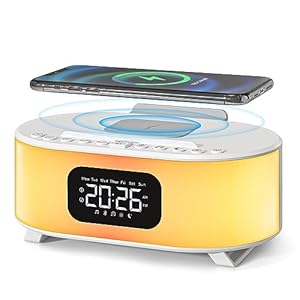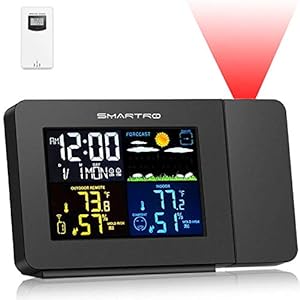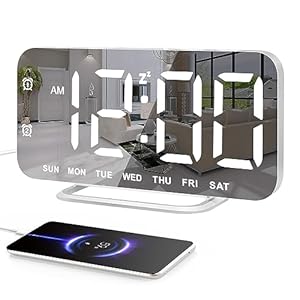
 Artwork by Clelia Rella
Artwork by Clelia Rella
TL;DR: Z-Wave is alive and properly, partly as a result of a robust group that’s constructing new open-source assets. To thrive properly into the longer term, it should take additional steps to open its know-how.
Final week, Dominic, Uwe, and I (Paulus) attended the Z-Wave Alliance member assembly in Austin, Texas. It was the primary assembly since we became a member and we got here with a mission: inform Alliance members concerning the work performed by the open-source group for Z-Wave and discover new avenues for collaboration.
Three of us attended, every representing completely different sides of Z-Wave inside the Open Residence Basis: Dominic is the founder and maintainer of Z-Wave JS, which powers the Z-Wave integration in Residence Assistant. Uwe leads the event of the Residence Assistant Z-Wave stick that we’re engaged on, and I used to be there to allow collaborations with different Z-Wave members. Massive because of Home Assistant Cloud subscribers – because of you we are able to do that work full-time at Nabu Casa.
A little background on Z-Wave
To use Z-Wave in Home Assistant, our users buy a Z-Wave certified USB stick and combine it with Z-Wave certified devices. Home Assistant then connects to the stick using Z-Wave JS, developed by Dominic, and we’re off to the races. Z-Wave JS was developed completely outside of the Z-Wave Alliance, and is based on the published version of the Z-Wave specification.
Z-Wave wasn’t always this open – Z-Wave used to be owned by a single company, which was later acquired by Silicon Labs. SiLabs decided it was time for change and turned the Z-Wave Alliance into a Standards Development Organization (SDO) that is controlled by its members and a standard that is open.
As it stands, there are still parts of Z-Wave that are not open yet, including the firmware that is running on Z-Wave sticks. I might have mentioned a couple of times, including in my keynote, that we should open up more. It is a good thing to let everyone help fix bugs, improve code quality, and improve diagnostics.
Opening Keynote
One of the conditions that we negotiated when joining the Z-Wave Alliance was that we would be allowed to give an opening keynote to explain the work we have been doing. For the last 8 years, Home Assistant has been doing its own thing with Z-Wave. We have contact with manufacturers of Z-Wave devices via our partner program, however by no means established an official relationship with the Alliance. We determined that it was time to vary that.
We launched the Open Home Foundation final month, a nonprofit that fights for privateness, selection, and sustainability within the sensible house – and anybody who lives in a single. Open sensible house requirements like Z-Wave are an vital constructing block for this. With Z-Wave, your information stays at house as communication is absolutely native. It’s a normal meant to supply shoppers selection, and with no reliance on the cloud, units can proceed to work lengthy after a producer ends help, or frankly doesn’t care anymore.
In the event you comply with tech information, you could be questioning now: What about Matter? With the OHF, we consider in selection, together with at the usual degree. Every normal is constructed on high of various applied sciences, and every has professionals and cons. Z-Wave is nice as a result of it really works with out Wi-Fi, and its sub-GHz frequency is much less busy, permitting it to journey additional.
 Paulus Schoutsen presenting
Paulus Schoutsen presenting
In my keynote to the Alliance, I launched the work we’ve been doing with Residence Assistant, Z-Wave JS, and the Open Residence Basis. In line with our opt-in analytics, 9.7% of our customers use Z-Wave. This additionally signifies that 90.3% of installations are one Z-Wave stick away from having the ability to use Z-Wave. Z-Wave JS has opt-in statistics, which present on common there are 17 Z-Wave units per community. Math time:
1 million lively Residence Assistant installations
x
9.7% utilizing Z-Wave
x
17 Z-Wave units
=
1.7 million Z-Wave units in use
In relation to sensible house requirements, all huge sensible house platforms are all-in on Matter and have skipped or forgotten about Z-Wave – aside from Residence Assistant. We have now all the time featured Z-Wave in our checklist of integrations and are huge promoters of the usual.
That is the place I launched our objective for Z-Wave to the Alliance: we would like Z-Wave to be a profitable consumer-facing model. Z-Wave may be very fashionable amongst firms within the US making safety merchandise (like Ring). Nonetheless, the patron doesn’t know they’re utilizing Z-Wave as a result of it’s an implementation element. This holds Z-Wave again from turning into a wealthy ecosystem.
For us, success signifies that there are various producers making Z-Wave units and that customers have an abundance of selection in every product class.

Z-Wave JS is an unbiased driver created from the bottom up primarily based on the revealed Z-Wave specification. Dominic has put lots of effort into this, and his work has shaped a group of individuals enthusiastic about creating the very best open Z-Wave driver. Our group has many energy customers who take a look at Z-Wave JS and ensure it scales and works with each outdated and new units.
We’re engaged on getting Z-Wave JS licensed to get firms to think about adopting it. Excellent news on that entrance – there’s already one firm that has dropped their 20-year-old Z-Wave stack in favor of Z-Wave JS. Let’s get extra on board!
Our efforts to make Z-Wave successful transcend making an open supply Z-Wave driver and sensible house platform. We additionally created the Z-Wave JS Firmware Replace service to offer updates for Z-Wave units. For this service we’re at present working with 8 completely different producers to offer firmware for 187 units. In my keynote I advised the viewers that we wish to assist extra producers present updates to their customers.
 The businesses that contribute their firmware to the Z-Wave JS Firmware Replace service.
The businesses that contribute their firmware to the Z-Wave JS Firmware Replace service.
Ultimately, I wrapped up my discuss pushing the Alliance to open up extra: all of us need Z-Wave to succeed. Whether it is extra open, it is going to be simpler for customers to undertake. This may result in extra tooling, extra apps, extra every thing. That may, in return, result in an even bigger Z-Wave ecosystem the place we are able to all thrive. Some will do it for gross sales, or in our case, to drive ahead merchandise that worth privateness, selection, and sustainability.
We’re all on this Alliance to have our units work collectively. Let’s not compete on who can finest management a Z-Wave mild bulb.
OPEN SOURCE!
Range testing our Z-Wave stick prototype
One of our team’s first stops at the Z-Wave Summit was attending DrZWave’s vary take a look at down on the Colorado River. This was an ideal alternative to see how properly the prototype of our Z-Wave stick performs. Whereas others examined with enormous antennas on each side to succeed in the longest vary attainable, we intentionally selected end devices with tiny antennas to recreate a extra real-world situation. In spite of everything, many units out within the wild don’t have room for giant exterior antennas, and we wish to have the very best expertise for our customers with present networks. Additionally, we examined each basic Z-Wave and Z-Wave Lengthy Vary as a result of a majority of present units nonetheless use basic Z-Wave.
Bikes and scooters weren’t allowed on the bridges and close to the water, so Uwe obtained some train that day, strolling a number of miles up and down the river with the tip units in his pockets. Dominic carried out the vary take a look at utilizing Z-Wave JS UI and a easy script that despatched on/off instructions to the tip units to make them blink. Because of encryption, even a single corrupted bit could be noticeable by an interruption of the blinking sample and lacking responses from the tip machine.
It’s barely seen within the picture, however we reached the bridge behind the bridge all the way in which within the background. We used basic Z-Wave and Z-Wave Lengthy Vary, though basic Z-Wave was not as dependable at that distance. That could be a 0.7-mile (1.13-km) line of sight! With a greater antenna on the opposite aspect or utilizing EU frequencies (which permit larger transmit energy), even additional ranges are undoubtedly attainable.
 Left: Dominic, barely jetlagged, with our stick prototype (inexperienced). Proper: DrZWave with the controller reference design (purple). Background: Uwe, 0.7 miles away.
Left: Dominic, barely jetlagged, with our stick prototype (inexperienced). Proper: DrZWave with the controller reference design (purple). Background: Uwe, 0.7 miles away.
Unplug fest
Afterward, everybody headed inside for the unplug fest, the place producers of finish units and controllers/gateways may join and take a look at how properly they work together with one another. Right here’s an instance of a HomeSeer prototype that already has nice help in Z-Wave JS:

Since there was nonetheless a while left, we took the prospect to carry out extra vary assessments with our prototype and the reference design, this time indoors going up by way of a number of layers of concrete. Relying on the tip machine, we have been capable of bridge between 2 and eight flooring.
Z-Wave JS is EVERYWHERE
Moreover powering the Z-Wave integration in Residence Assistant, Z-Wave JS is a superb instrument for improvement. Constructed with diagnostics in thoughts, Z-Wave JS helps perceive what the controller and units are doing and whether or not they’re behaving as anticipated.
Though we got down to inform individuals about Z-Wave JS, we discovered that lots of engineers from established firms already use it for improvement – and of their displays!

They use it to breed points, do load testing, write scripts to automate sure duties, and run their very own take a look at suites. This contains utilizing the CLI instruments to replace firmware, for instance, to research modifications between completely different Z-Wave SDK variations. The Javascript API makes it trivial to carry out arbitrary actions and automate issues which can be arduous or unimaginable to do utilizing UI-based functions.
One other priceless improvement instrument is the Zniffer, a particular Z-Wave controller that may seize and decode all Z-Wave radio visitors. Like a lot of the present tooling, this requires utilizing Home windows. Previous to the summit, Dominic had began engaged on including help for Zniffer units to Z-Wave JS. Though this was nonetheless a piece in progress, individuals have been already utilizing it for improvement functions and advised us they have been trying ahead to it being formally launched.
Conclusion
Z-Wave is a strong know-how with a big set up base, and in sure use circumstances, it supplies actual benefits over different connectivity requirements. Assembly Alliance members, I can see they’re enthusiastic concerning the future, but it surely’s the group that can drive the following chapter of Z-Wave. Additional opening Z-Wave will empower each the distributors and the group – and assist construct an open house that serves everybody in it, offering better privateness, selection, and sustainability.
Trending Merchandise










